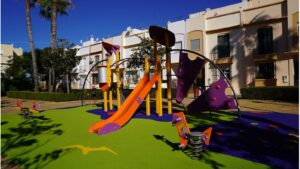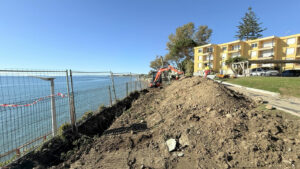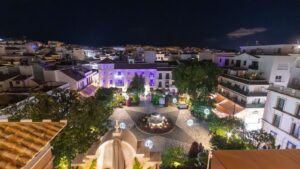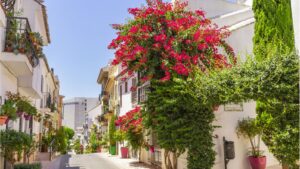Sustainable Luxury in Estepona
The Costa del Sol has long been synonymous with opulent living and stunning Mediterranean views, but a new trend is rapidly reshaping Estepona’s development landscape. Sustainable luxury has emerged as the defining characteristic of new residential projects in this sun-soaked paradise, creating a harmonious blend of environmental consciousness and high-end living that appeals to an increasingly eco-aware international community.
The Rise of Sustainable Luxury Developments in Estepona
Estepona’s transformation into a hub for sustainable luxury real estate represents a significant evolution in how developers approach high-end properties in this coveted Mediterranean location. Gone are the days when luxury simply meant marble floors and infinity pools. Today’s discerning buyers seek properties that align with their environmental values without compromising on comfort or aesthetics.
These new sustainable luxury developments incorporate innovative green technologies and design principles that reduce environmental impact while enhancing residents’ quality of life. From energy-efficient construction methods to water conservation systems, these properties are setting new standards for responsible luxury living on the Costa del Sol.
A perfect example is the growing number of developments receiving international certifications such as BREEAM and LEED, which validate their environmental credentials. These certifications have become powerful selling points, particularly for international buyers from Northern Europe and North America, where environmental consciousness is deeply ingrained in the culture.
Key Features of Sustainable Luxury Homes in Estepona
What exactly makes a luxury development “sustainable” in Estepona’s competitive real estate market? The answer lies in a comprehensive approach that addresses multiple aspects of environmental impact:
Energy efficiency stands at the forefront of sustainable luxury design. New developments integrate solar panels, high-performance insulation, and smart home systems that optimize energy usage. These features not only reduce carbon footprints but also result in substantial savings on utility bills—a practical benefit that complements the environmental advantages.
Water conservation represents another critical component, particularly relevant in southern Spain’s climate. Sophisticated rainwater harvesting systems, drought-resistant landscaping, and water-recycling technologies have become standard features in sustainable luxury properties, addressing one of the region’s most pressing environmental concerns.
Beyond technical specifications, sustainable luxury developments in Estepona embrace biophilic design—an architectural approach that connects residents with nature. This philosophy manifests in living green walls, rooftop gardens, and the integration of natural materials throughout the properties. The result is a living environment that feels both luxurious and grounded in nature’s rhythms.
As noted in the article Eco-Friendly Future Rises in Estepona, these developments are transforming the urban landscape while preserving the natural beauty that makes this coastal town so attractive.
The Market for Sustainable Luxury in Estepona
The demand for sustainable luxury homes in Estepona continues to grow, driven by shifting consumer preferences and increasing environmental awareness. International buyers, particularly from Scandinavia, Germany, and the Benelux countries, specifically seek properties with strong sustainability credentials, viewing them as both lifestyle statements and sound investments.
Property developers have responded enthusiastically to this market trend. New projects prominently feature their environmental innovations in marketing materials, highlighting how luxury and sustainability coexist harmoniously in their designs. This shift represents more than a temporary trend—it signals a fundamental reimagining of what constitutes premium real estate in the 21st century.
The price premium for sustainable luxury properties appears justified by their long-term value proposition. While initial purchase prices may be 10-15% higher than conventional luxury developments, buyers recognize the potential for energy savings, increased property appreciation, and the intangible benefits of living in harmony with the environment.
Real estate professionals in Estepona report that sustainable luxury developments typically sell faster than their conventional counterparts, despite the premium pricing. This market reality has accelerated the transition toward greener building practices across the sector.
Notable Sustainable Luxury Developments in Estepona
Several standout projects exemplify the sustainable luxury movement in Estepona. These developments serve as benchmarks for what’s possible when environmental consciousness meets high-end design:
One groundbreaking project features carbon-neutral villas that generate as much energy as they consume, achieved through a combination of solar power, advanced insulation, and intelligent energy management systems. These properties offer panoramic Mediterranean views while maintaining minimal environmental impact—a compelling combination for eco-conscious luxury buyers.
Another noteworthy development has pioneered the use of recycled and sustainable materials without compromising aesthetic appeal. From reclaimed wood flooring to countertops made from recycled glass, these properties demonstrate that sustainability and sophisticated design are fully compatible.
Urban infill projects near Estepona’s town center exemplify how sustainable luxury can revitalize existing neighborhoods. These developments repurpose underutilized spaces, reducing urban sprawl while providing residents with walkable access to amenities—a crucial aspect of sustainable urban living.
The principles behind these developments align perfectly with the broader environmental values discussed in A Green Gem on Costa del Sol, which explores how environmental conservation has become integral to the region’s identity.
Living the Sustainable Luxury Lifestyle in Estepona
The appeal of sustainable luxury developments extends beyond their architectural features to encompass a comprehensive lifestyle. Residents of these properties often find that their homes facilitate a deeper connection with Estepona’s natural environment and local culture.
Community gardens, shared electric vehicle charging stations, and communal spaces designed for social interaction foster a sense of community among residents who share similar environmental values. This social dimension adds significant value to the sustainable luxury experience, creating neighborhoods rather than mere collections of high-end properties.
The integration of wellness features represents another distinctive aspect of sustainable luxury living in Estepona. From air purification systems to non-toxic building materials, these developments prioritize residents’ health alongside environmental concerns. The resulting living environments promote physical and mental wellbeing—an increasingly important consideration for luxury property buyers.
Many sustainable luxury communities in Estepona also organize environmental programs and educational initiatives, allowing residents to deepen their engagement with conservation efforts. Beach cleanups, native species restoration projects, and workshops on sustainable living practices create opportunities for meaningful community involvement.
The Future of Sustainable Luxury in Estepona
As Estepona continues to evolve, sustainable luxury appears poised to become the dominant paradigm rather than an alternative niche. Several emerging trends suggest how this market segment will develop in the coming years:
Technological integration will intensify, with artificial intelligence playing a greater role in optimizing resource usage. Smart home systems that learn residents’ patterns and adjust energy and water consumption accordingly represent the next frontier in sustainable luxury living.
Circular economy principles will increasingly influence development practices, with buildings designed for eventual disassembly and material reuse. This approach minimizes waste and reduces the environmental impact of the construction process—historically one of real estate development’s least sustainable aspects.
Community-scale renewable energy initiatives will expand beyond individual properties to encompass entire developments. Microgrid systems that share locally generated clean energy optimize resource utilization while strengthening community resilience.
The concept of luxury itself will continue to evolve, with exclusivity increasingly defined by environmental performance rather than ostentatious features. This shift reflects broader societal changes in how status and quality are perceived, particularly among younger luxury buyers.
For those interested in the broader context of environmentally conscious living in the region, Eco-Friendly Paradise on Costa del Sol provides valuable insights into the community’s commitment to sustainability.
Conclusion: The New Standard of Luxury in Estepona
Sustainable luxury developments have transformed Estepona’s real estate landscape, creating a new paradigm that aligns environmental responsibility with exceptional living experiences. This evolution reflects broader changes in consumer preferences and social values, particularly among the international community that calls this Mediterranean paradise home.
For prospective buyers and investors, these developments offer compelling advantages: reduced environmental impact, lower operating costs, potential appreciation advantages, and the satisfaction of supporting responsible development practices. These benefits explain why sustainable luxury has moved from a market niche to a dominant trend.
As Estepona continues to grow and evolve, sustainable luxury will likely become the expected standard rather than a distinctive feature. This transformation promises to enhance the town’s appeal as a destination that honors its natural beauty while embracing innovation and responsible development.
The story of sustainable luxury in Estepona demonstrates how environmental consciousness and high-end living can complement rather than contradict each other—a valuable lesson for coastal developments worldwide. In this sun-blessed corner of southern Spain, the future of luxury has arrived, and it’s decidedly green.






